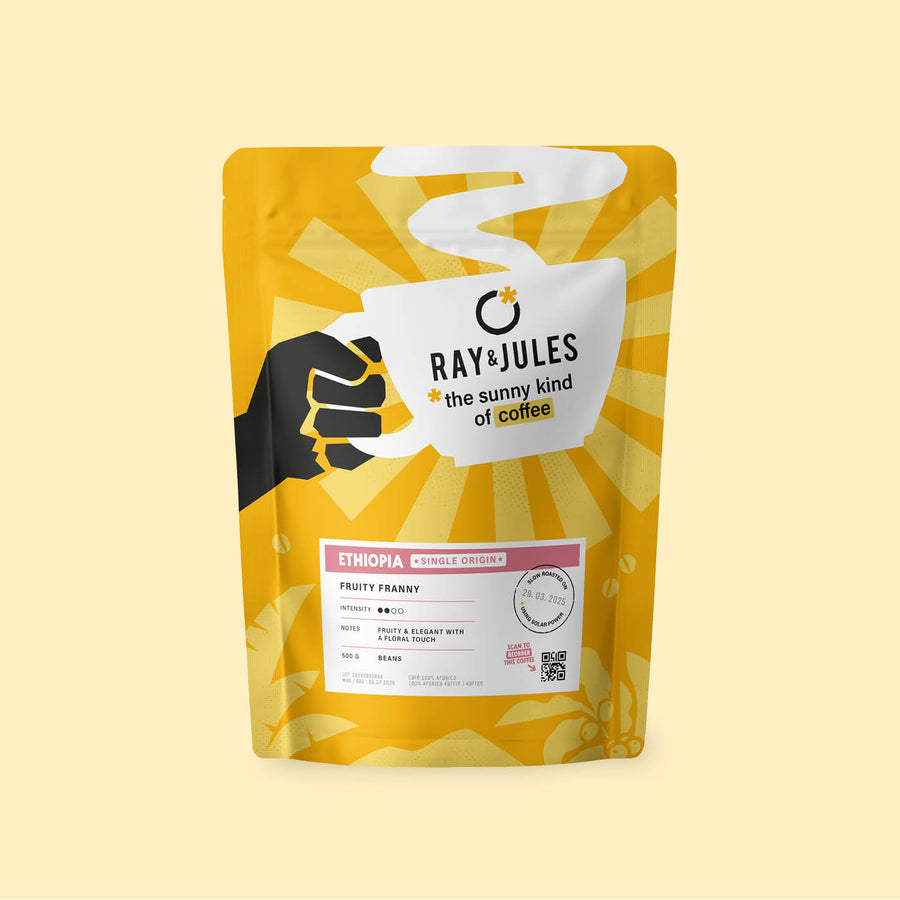Farmers, mountains, and beans: discovering the essence of our Peruvian coffee
In 2024, I met Lenin, one of the leaders of this company, at a coffee event. We got talking and quickly found common ground in our ideas about short supply chains and initiatives for climate-resistant coffee cultivation. He invited me to Peru. We laughed about it at the time, but a year later I was actually on a plane to Chiclayo in northern Peru...
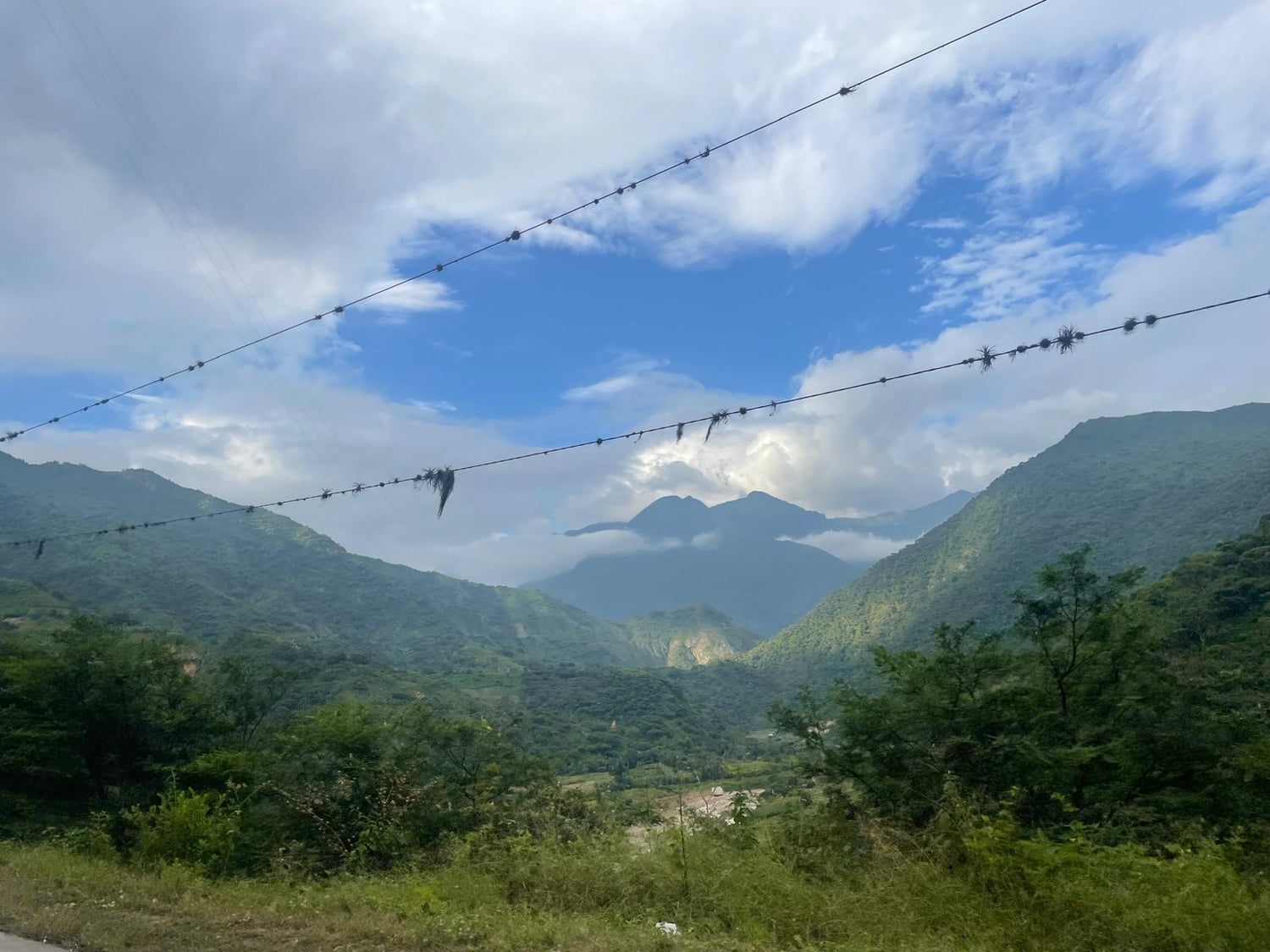
Chiclayo is a medium-sized coastal city in northern Peru and is also known as the “city of friendship” because of its friendly and hospitable people. I was picked up by Richard, Lenin's cousin, who immediately immersed me in Peruvian cuisine and lived up to the city's friendly image. We ate ceviche, the best I've ever tasted. Richard works on a project basis for Finca Churupampa, helping them with market research and finding financial resources.
From Chiclayo, we drove to Jaén. It was a seven-hour drive through a beautiful and vast green landscape. I stayed awake so I wouldn't miss anything. When we arrived in Jaén, I met Lenin again to discuss the plan for the coming days. Then I fell asleep, despite the loud music in the hotel and the noise of the city.
A day in the lab: where quality begins
The next morning, Lenin introduced me to Eber, the founder and driving force behind Finca Churupampa. In the modest office just outside Jaén, I found myself in their quality lab. This lab is run by Eber's wife, Talia, a certified Q grader who is responsible for evaluating every batch of coffee that comes in here.
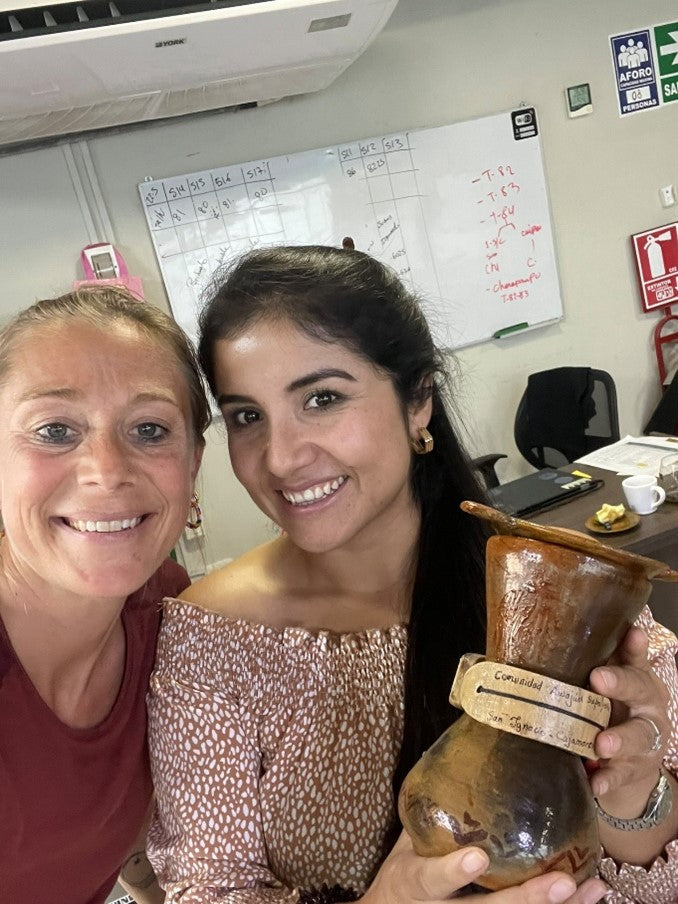
I would never have thought of scheduling a whole day in the lab during a sourcing trip, but it soon became clear how interesting it was. Seeing up close how quality is handled in the country of origin and how that quality is fed back to the farmers tells you a lot about a company's values.

We tasted at least 50 different coffees that day, ranging from ordinary to absolute gems. The evaluation is immediately communicated to the farmer, who is then given a price for his coffee based on this evaluation.
I ask Talia what she likes most about her job. She replies, “I love cupping, but what really makes my work special is the contact with the farmers. They look forward to the results of the cupping and often get to work with them. They tell me about their plantations, what's going well, what's difficult... That's so valuable.”
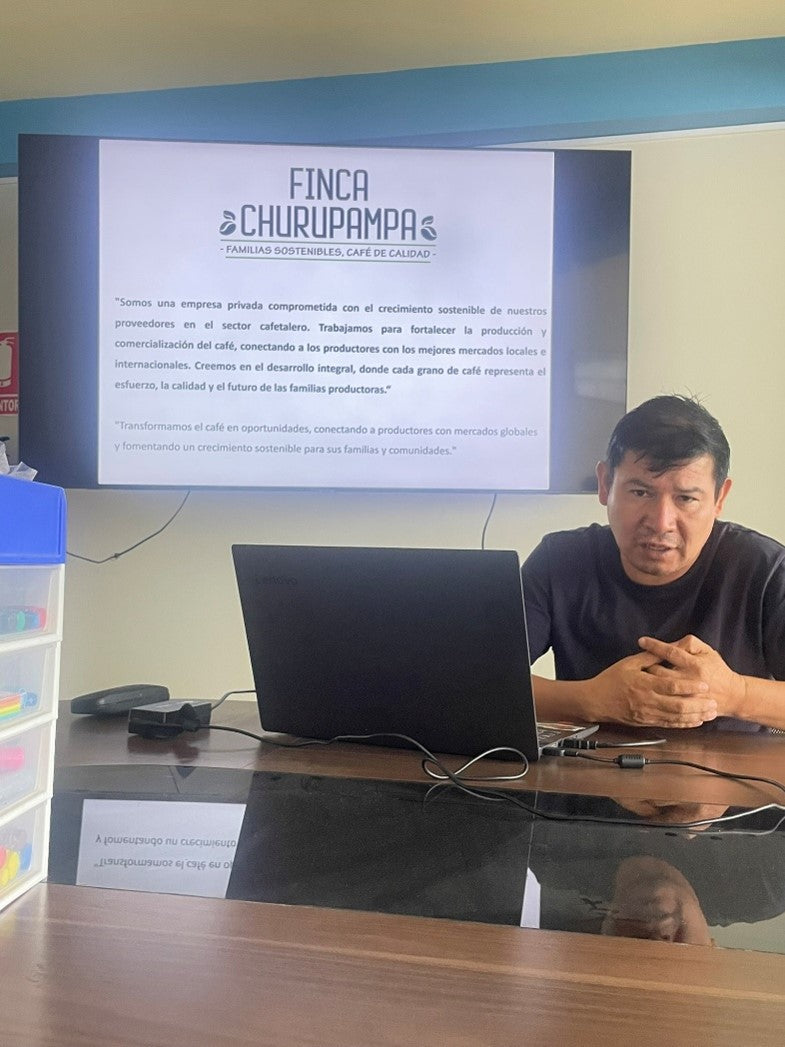
From family business to model farm
Between cuppings, I am given a presentation by Lenin. Finca Churupampa was founded in 2011 by Eber, his mother, and two brothers with the aim of creating a self-sufficient, productive, and integrated coffee farm. The company quickly grew into a model of sustainable coffee production. In 2013, they began exporting high-quality coffees, and more and more farmers from the surrounding regions joined them. They focus on quality and on creating a future for the farming families.
The focus is on quality and on creating a future for farming families.
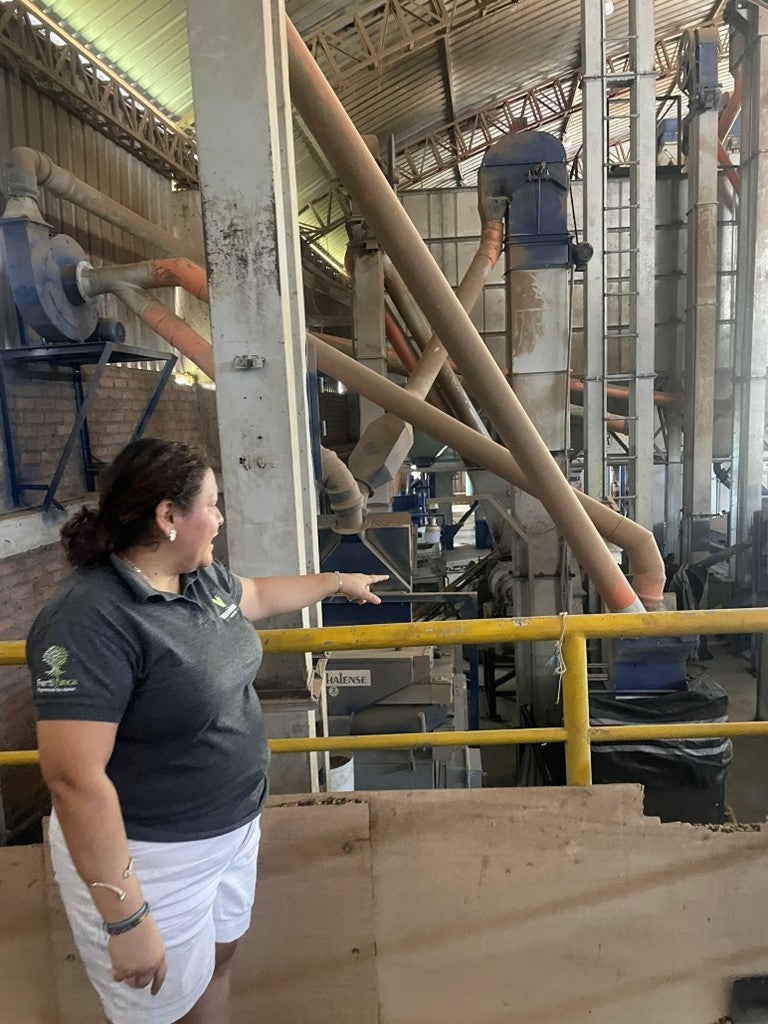
Today, Finca Churupampa brings together around 400 families, who together produce 60 containers of coffee annually, or 1,200 tons of green coffee beans. They also purchase and export coffee from local cooperatives. All in all, around 190 containers are shipped each year, mainly to customers in America.
In 2024, they founded Yanapampa, a processing plant where the entire process takes place. Elena is ‘the leading lady’ there.
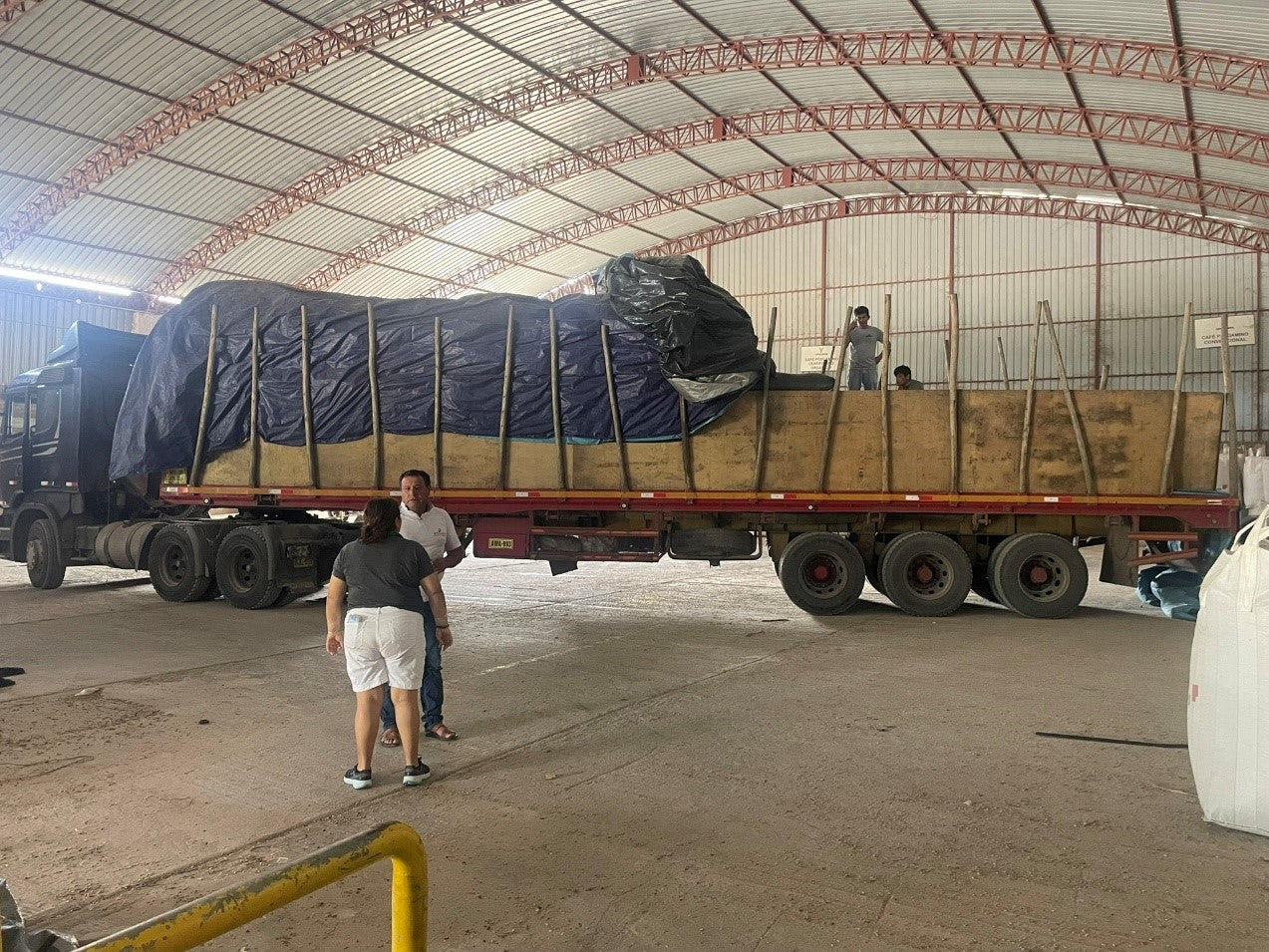
She shows me around the entire processing unit behind the offices. From receiving the coffee beans to drying, sorting, selecting, and finally packaging the coffee in export-ready bags, everything is done on site. This allows them to closely monitor every step of the process and guarantee quality and traceability.
Finca Churupampa, Yanapampa, and recently also the start-up of Fertifinca are the three connected companies. With the latter, they want to support their farmers with organic fertilizers. The idea is to distribute these among affiliated farmers and thus help them make the transition to organic farming and beyond: toward regenerative agriculture.
Chirinos Chirinos and the mountains
The next day, we have a drive to Chirinos, to the roots of Finca Churupampa and, 70 km away, the farm of Eber and his family. Once again, we drive through scenes worthy of a movie. Rice plantations alternate with corn and banana fields.
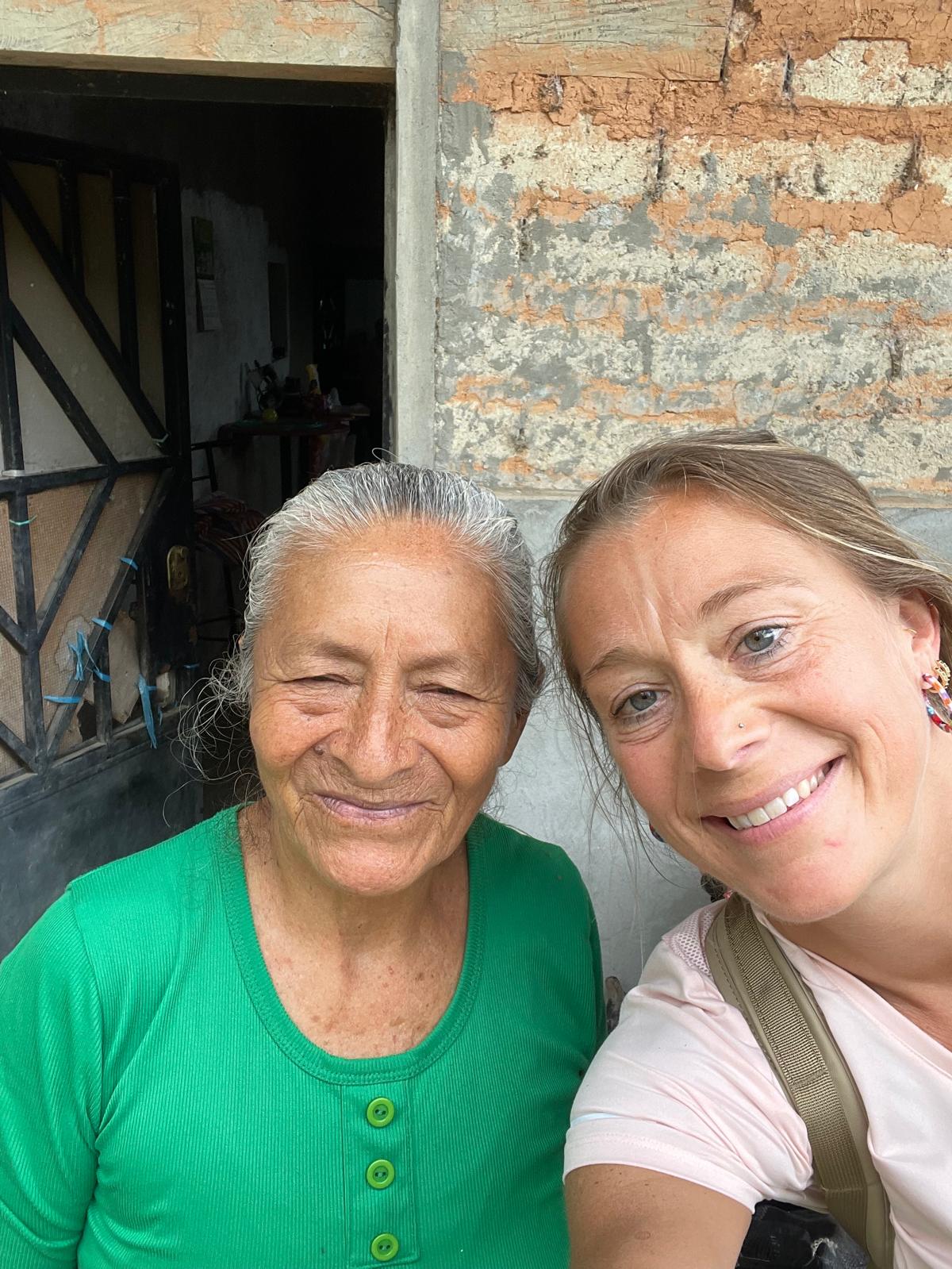
At Chirinos' office, I am once again invited to sit down at a cupping table. There, too, the first coffee lots are being cupped and evaluated. I am introduced to the manager of this ‘unit’, Eber's brother, the Qgrader of the lab, and also to Miguel, a cheerful and passionate agronomist. Miguel, Eber, Lenin, and I leave in the afternoon for the ‘infamous’ Finca Churupampa in the mountains. There we meet Eswin (Eber's younger brother) and his mother.
There is already a lot of anticipation and talk about the meal that the mother will prepare for us in the evening. They are all convinced that I should abandon my vegetarianism for once because her chicken is said to be phenomenally delicious. I laugh it off and wonder how I can politely decline. But before I can ponder this dilemma, the moment has finally arrived: we are going to visit the Peruvian coffee plantations.
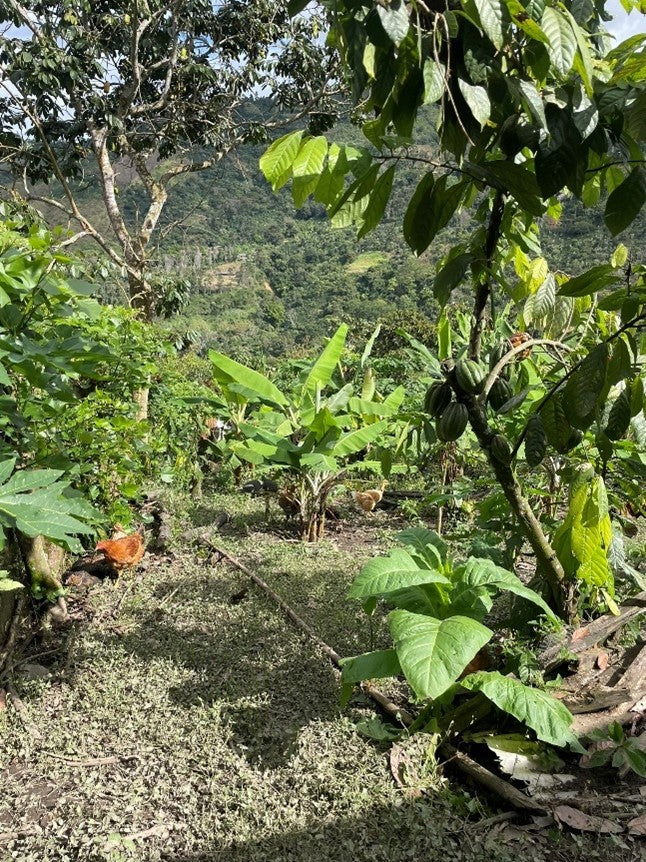
Chickens as weed controllers
Eswin runs the finca and shows us where the coffee is washed and dried. The plantations themselves look fantastic. The plants are spaced well apart and around 150 chickens keep the fields weed-free. The chickens not only help to lighten the workload, but also serve as food, and their eggs are welcome in a country where eggs are served with every meal. In addition to chickens, guinea pigs are also bred for food and have become a national delicacy.
Finca Churupampa: an example for the region
Finca Churupampa serves as a model farm for coffee farmers in the region. Miguel and Eber explain to me how complex it is to bring about change in a world so deeply rooted in tradition. Many farmers grew up on the plantations, among the coffee trees, and learned the trade from their parents and grandparents. Their way of working is often based on generations of experience, deeply rooted in customs, beliefs, and traditional practices.

Until recently, the focus was mainly on productivity: harvesting as much coffee as possible, without paying much attention to quality. But that is slowly starting to change. More and more farmers are realizing that quality has a direct impact on their income: the better the coffee, the better the price they get for it. Finca Churupampa plays a crucial role in this. With a professional and well-founded approach, they help introduce new agricultural techniques, such as climate-resistant plantations and agroforestry. But these changes often meet with resistance. Many farmers are skeptical of “experts” and find it difficult to let go of their familiar way of working. The transition to innovation requires not only knowledge, but above all a mental shift. That often proves to be the most difficult part.
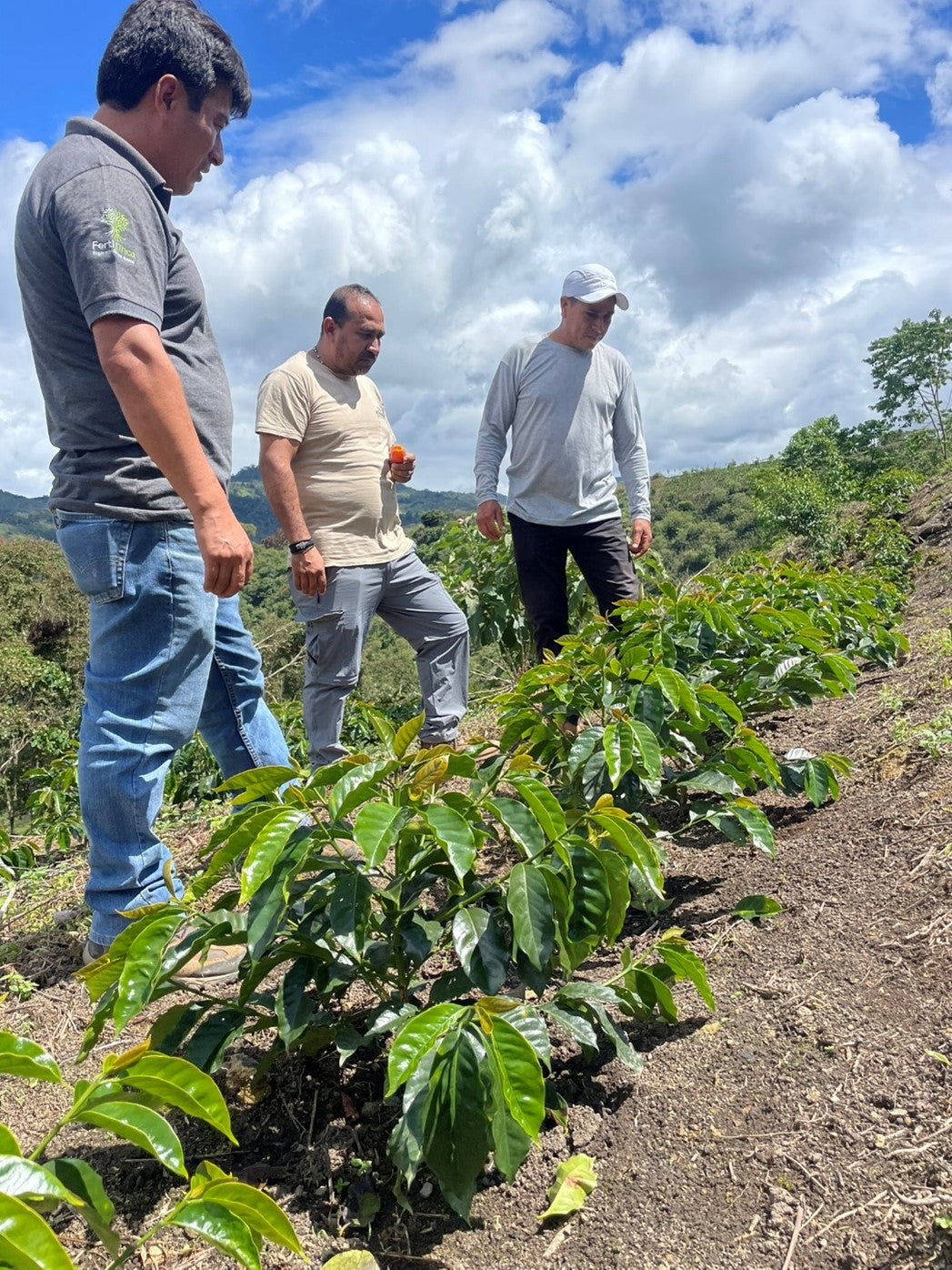
WaWhy 3 meters makes all the difference
A good example of how difficult change can be is the way Finca Churupampa plants its coffee bushes. They do so in rows with three meters between each bush, something that is almost unthinkable for many farmers. Their initial reaction? “But you'll lose a huge amount of yield!” Because in their eyes, the more bushes, the more coffee.
Yet the opposite turns out to be true. Coffee needs three essential conditions to grow: light, air, and space. These are things that are often lacking in traditional, densely planted plantations. By leaving more space between the rows, the plants not only get better growing conditions, but there is also space between the rows. This can be used for planting other crops. This not only increases biodiversity and soil quality, but also the farmer's income.
What's more, this approach makes work more efficient: less daily labor per hectare is required, access to the plants is easier, and nutrients can be administered in a more targeted manner. At the same time, the plantation becomes more resilient to the effects of climate change and better for the planet.
In the next blog about Peru, we will put the spotlight on individual farmers, so stay tuned!

